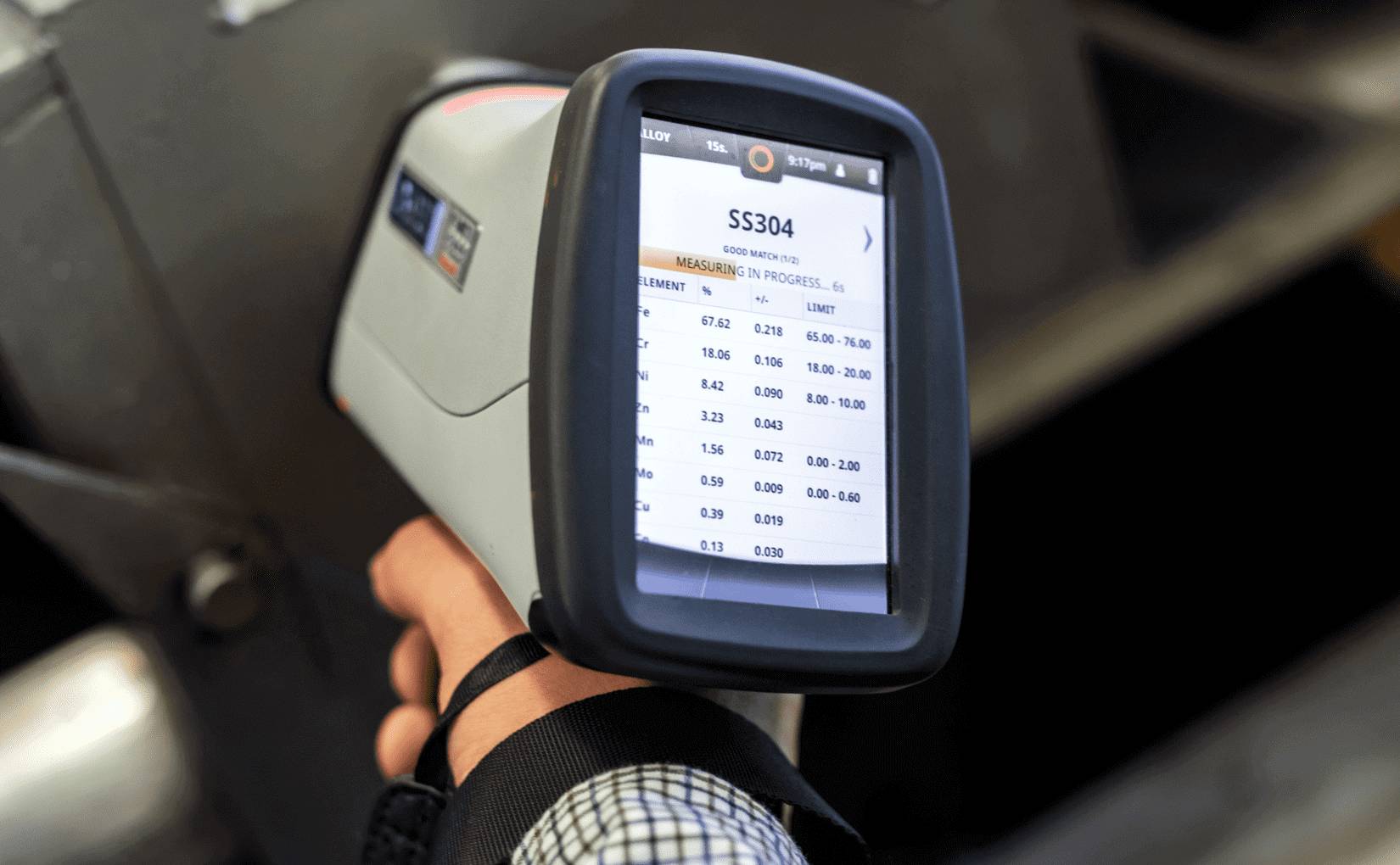There are thousands of different grades of steel, each with specific requirements for carbon content, the composition of other alloying elements, and processing methods. These details determine the grade’s characteristics, so when you choose a grade of quality steel, you can expect it to have certain properties. But how do you know the steel you purchased meets the composition and specifications it claims to?
There is great value in being able to verify steel composition, especially when the source is unknown or suspect. Certifications from a reputable U.S. mill are often adequate, but some technologies can provide an even more detailed breakdown of steel composition, which we’ll look at in more detail here.
The Importance of Quality Steel
Because there is so much variation between different grades of steel, it’s important to be able to have confidence in its quality. Low-quality steel can have impurities, inconsistencies, or manufacturing defects that can be problematic for both processing and service. For example, inconsistent levels of carbon and other alloying elements can make it difficult to weld one piece of steel to another.
China produces more than half of the world’s steel, which floods the market and deflates prices globally. It can be hard for quality steel producers to compete with cheap Chinese steel. American steelmakers are held to strict industry standards, like those maintained by the American Society for Testing and Materials (ASTM), that specify the testing requirements and allowable compositions for different grades of steel. These standards ensure manufacturers and builders know what’s in the steel they’re using and what its properties are. However, Chinese steelmakers do not typically follow these standards.
In the early 2000s, Chinese steel producers often added boron to their steel to circumvent anti-dumping laws. The addition of boron makes the steel prone to cracking during welding and is a safety hazard.
Chinese-produced steel often has other quality issues as well. For example, in 2013, the Oakland Bay Bridge in San Francisco experienced several steel rod failures due to corrosion. The bridge was originally constructed using Chinese steel and has since been plagued with corrosion, cracking, and weld defects. These defects have been largely attributed to the use of low-quality Chinese steel to construct it.
Certified, High-Quality Steel from U.S. Mills
Many U.S. manufacturers, fabricators, and builders have learned the lessons of using cheap, low-quality steel and now only buy U.S.-made steel. As mentioned above, U.S. steel mills abide by ASTM and other industry standards that require stringent testing and process controls that ensure high-quality steel products. Steel from U.S. mills comes with material test reports (MTRs) verifying its properties. MTRs typically contain the following information:
- Name of the mill
- Heat number
- Batch number
- Mechanical testing results
- Chemical analysis
- Dimensions
- Grade
- Standard/specification
This information can be used to trace the steel back to its origin, including all documented parts of the manufacturing process. With an MTR, unlike with imported steel of questionable quality, you know exactly what grade and quality of steel you’re getting.
Getting Quality and Value from Verified Steel Remnants
Many builders and fabricators rely on tested and certified high-quality steel from U.S. mills to ensure a quality product. However, the downside of new, U.S.-made steel is its price. Depending on the grade, new steel from the mill can be very costly, especially compared to cheap, imported steel and steel from unverified sources.
Fortunately, there is another way to get quality steel at an affordable price: verified steel remnants. Scrap metal remnants produced by large-scale manufacturing processes can easily be recycled or reused, allowing manufacturers to buy smaller pieces of steel at heavily discounted prices.
The challenge of reusing these remnants in manufacturing processes is verifying the steel quality. Designs often specify the grade of steel required for a part or structure, and without an MTR or other certification, the quality of steel remnants must be verified in another way. Nondestructive spectrometry technologies, such as x-ray fluorescence (XRF), can reveal the exact composition of these remnants with a simple scan by a handheld analyzer. This information is incredibly valuable, as it can provide even more detail about the steel’s chemical composition than an MTR, allowing manufacturers to use these steel remnants with confidence in their quality.
The Bay Area’s Trusted Source for Quality Steel
The best way to ensure you’re getting quality steel is by buying from a trustworthy metal supplier. While there is plenty of cheap, questionable steel on the market, saving a little money up front isn’t worth it when safety and quality are involved—especially when options like verified steel remnants offer both low cost and high quality.
Industrial Metal Service supplies new, U.S.-made steel and verified remnants to manufacturers, fabricators, welders, builders, and other metalworkers in the San Francisco Bay Area and beyond. We stock an extensive inventory of steel, aluminum, titanium, and other industrial metals in our San Jose warehouse. We specialize in offering usable metal remnants, which are verified using Thermo-Fisher XRF analyzers to determine their composition and assure our customers they’re receiving the grade of quality steel they need.
Contact Us
 Angle
Angle Cast Plate
Cast Plate Diamond Plate
Diamond Plate Flat Bar
Flat Bar Plate
Plate Round Bar
Round Bar Square Bar
Square Bar Square Tubing
Square Tubing Round Tubing
Round Tubing Angle
Angle Channel
Channel Diamond Plate
Diamond Plate I Beam
I Beam Round Bar
Round Bar Sheet
Sheet Square tubing
Square tubing Round Tubing
Round Tubing Rectangular Tubing
Rectangular Tubing Plate
Plate Rectangular Bar
Rectangular Bar Rectangular Tubing
Rectangular Tubing Round Bar
Round Bar Sheet
Sheet Square Bar
Square Bar Square Tubing
Square Tubing
